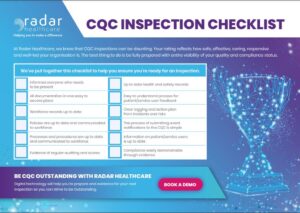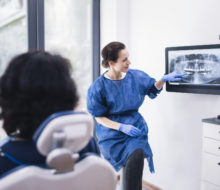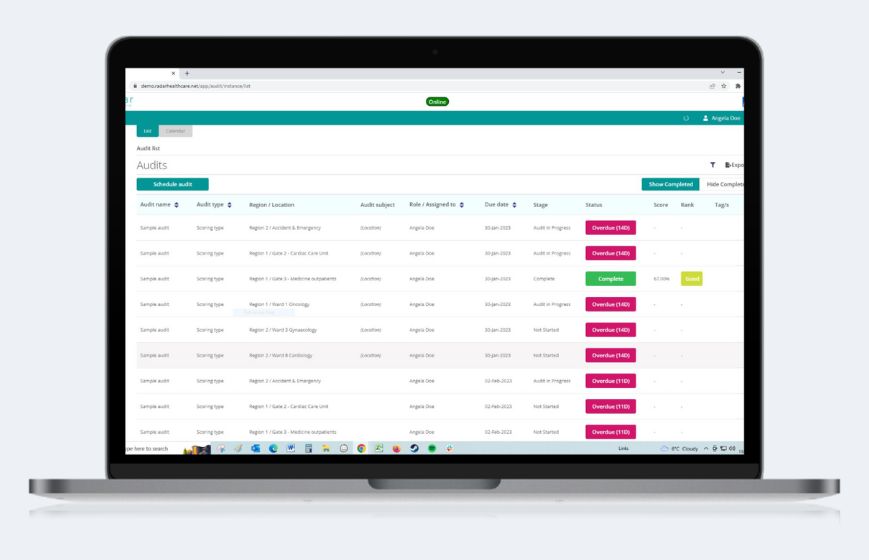CQC Dental Inspection Checklist
Tags:
 Your free CQC Dental Inspection Checklist
Your free CQC Dental Inspection Checklist
If you’re running one or more dental practices, you’ll know that behind the scenes there are many policies and procedures to keep your staff and patients safe. You probably also know that the Care Quality Commission (CQC) regulate areas of health and social care, including dentistry, to ensure that all care and treatment is satisfactory.
The new Quality Statements
CQC inspectors use a set of 5 standards to inspect dental practices. These are: safe, effective, caring, responsive and well-led. Within each of these are key statements that inspection teams can score practices against.
- Safe means that you are protected from abuse and avoidable harm
- Effective means your care, treatment and support achieves good outcomes, helps you to maintain quality of life and is based on the best available evidence
- Caring means staff involve and treat you with compassion, kindness, dignity and respect
- Responsive means services are organised so that they meet your needs
- Well-led means that the leadership, management, and governance of the organisation make sure it’s providing high-quality care that’s based on your individual needs, that it encourages learning and innovation, and that it promotes an open and fair culture
Improve your CQC rating with our free guide
The CQC rates organisations against each of the statements above, as well as providing an overall rating. These ratings are: inadequate, requires improvement, good, and outstanding. The CQC can take enforcement action if a service is showing no signs of improving. Any member of the public can find and compare services on the CQC’s website and see their ratings.
Find out more about the standards on our blog ‘What are the 5 CQC standards?’.
What types of inspection are there?
To determine ratings for organisations, the CQC carry out visits where they talk to staff and service users in order to gain a holistic view of the care given. There are 2 types of inspection:
Comprehensive – these are regularly carried out on health and social care services to ensure they’re providing care that meets the 5 key questions; safe, effective, caring, responsive to people’s needs and well-led.
Focused – carried out less frequently than comprehensive inspections, focused inspections take place if the CQC are concerned about something, or if there’s a change in a dental service’s circumstances such as an acquisition. It’s important to note that focused inspections don’t always involve all 5 key questions.
CQC site visits of primary care dental services
When the CQC notifies an organisation they regulate that they’re performing an inspection, the lead inspector sends an email to announce the date of the visit, which is usually 2 weeks prior.
They will call the practice to discuss logistics around the visit, but also to ask questions about the management systems, processes and practices. If the visit is unannounced, there is no notification in advance.
At the start of the visit, practices are required to present their own view of the performance of the services, especially in relation to the 5 key lines of enquiry.
During the inspection, the team will gather evidence. They will speak to patients and their families and also gather information from compliments and complaints. They speak to varying staff like receptionists and dental nurses, and also observe processes, review dental records, examine the premises, and ask to review documentation such as staff training records, risk assessments and audits. Practices need to ensure that these are easily accessible when requested.
Go digital and easily evidence good compliance to the CQC
Initial feedback is provided at the end of the visit, and the inspection team will explain the next steps and how they will create the inspection report.
 How to ensure you’re ready for an inspection, whenever it may be
How to ensure you’re ready for an inspection, whenever it may be
Firstly, consider moving to digital methods for quality and compliance. Many dental practices, no matter the type of service, still use paper-based methods. With software like Radar Healthcare, you can move all your incidents, auditing, risk assessments and more to one central place where it’s easy to pull reports for a CQC visit.
Secondly, take a look at our CQC inspection checklist which outlines some main pointers to ensure you’re ready for a visit. Prove you have full visibility of your quality and compliance status.









